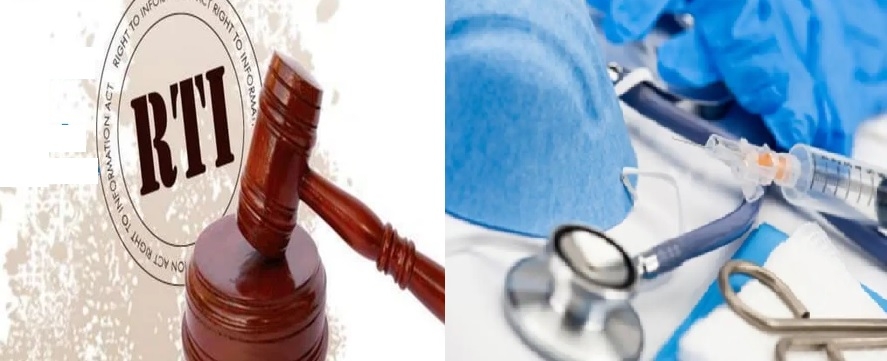RTI disclosures expose crumbling backbone of medical education system
| Date :07-Jun-2025 |

■ By Mukesh S Singh
NEW DELHI/RAIPUR
■AIIMS Nagpur, Bhopal and Bhubaneswar report 362 PG dropouts and unregulated 30–36 hour duty shifts amid unchecked systemic fatigue
■ AFMC, Pune data reveals 63 instances of 36-hour shifts monthly among just 15 anaesthesiology residents
■ JIPMER, Puducherry admits 276 PG dropouts, while NMC concedes over 1,100 nationwide in five years
A chilling mirror held up to India’s overstretched
healthcare system, fresh revelations accessed through
Right to Information (RTI) queries have laid bare the
deep-rooted dysfunction and burnout that plague the
country’s elite medical training institutions. From All
India Institute of Medical Sciences (AIIMS)
Bhubaneswar to Jawaharlal Institute of Postgraduate
Medical Education & Research (JIPMER), PGIMER
Chandigarh to Armed Forces Medical College (AFMC)
Pune, and the apex National Medical Commission
(NMC) itself, data reveals a shocking consensus: India’s
resident doctors are being driven past their physical
and psychological limits, with life-threatening consequences.
The comprehensive disclosures, shared with The
Hitavada by United Doctors’ Front (UDF) National
President Dr Lakshya Mittal, chronicle a pattern of
institutionalised overwork, mental health breakdowns,
and an abject failure to implement the 1992 Uniform
Residency Scheme (URS).
The RTIs were filed by health
rights advocate J. Swamidass in collaboration with UDF.
According to NMC’s own RTI response, the commission received 1,680 formal complaints between 2020
and 2024 from medical students regarding issues
including ragging, long duty hours, faculty bullying,
and abuse. During the same period, 1,113 postgraduate medical students dropped out, and a staggering
119 UG and PG students died by suicide due to academic or work-related stress.
At AFMC Pune, anaesthesiology residents reported
performing 63 separate 36-hour shifts over just three
months, with many also working continuous 12-hour
night shifts twice a week—despite being in only their
fourth to sixth month of training.
Similar data from
the Department of General Medicine at AFMC revealed
duty rosters reaching 66 hours per week, with one 24-
hour shift every week and four 30+ hour duties every
month.
AIIMS Bhubaneswar’s response added another layer of severity. In departments like Ophthalmology, junior residents were recorded working 12–14 hour shifts
routinely and doing 24-hour duties up to three times
a week. Despite institutional claims of a 48-hour work
week, the actual implementation was found to be subject to patient load, which in reality meant that the
rules were often bypassed. Notably, AIIMS confirmed
that duty hours could extend to 30 or even 36 hours,
depending on institutional needs.
Equally alarming are the dropout and mental health
statistics. JIPMER reported 276 PG student dropouts
and 200 undergoing psychiatric counselling between
2020 and 2024. AIIMS Bhopal and AIIMS Nagpur recorded 178 and 56 PG student dropouts respectively during the same period. These numbers are not mere outliers –they are a reflection of sustained neglect and
overwhelming systemic pressure.
“Resident doctors are the silent engines of India’s
public health system, but their lived experience is now
synonymous with institutionalised cruelty,” Dr Mittal
said. “What we’re witnessing is a normalisation of
physical collapse, unacknowledged grief, and administrative silence.”
The RTI disclosures further highlight that there is
no central monitoring mechanism under NMC to
enforce residency norms. The commission admitted
that it does not maintain data on duty hour breaches, suicide cases, or grievance redressal outcomes – a
staggering oversight for a regulatory body.
According to AIIMS Bhubaneswar, while they claim
to maintain biometric attendance and duty rosters,
there is no consistent mechanism ensuring that residents receive 52 weekly offs and 20 casual leaves annually as per the 2023 Postgraduate Medical Education
Regulations.
The issue has now reached the judiciary. The United
Doctors’ Front has filed a Public Interest Litigation
(PIL) in the Supreme Court seeking the full implementation of the URS and 48-hour weekly duty limits. This move comes after the Ministry of Health, for
the first time in 33 years, conducted a review meeting
in April 2025, chaired by Dr Sunita Sharma, Additional
Director General of Health Services. However, the situation on the ground remains unchanged.
“The National Medical Commission’s passive stance
is tantamount to complicity,” Dr Mittal stated. “When
the apex medical regulator does not even track lifeor-death indicators among resident doctors, it signals
a failure of both governance and conscience.”
■